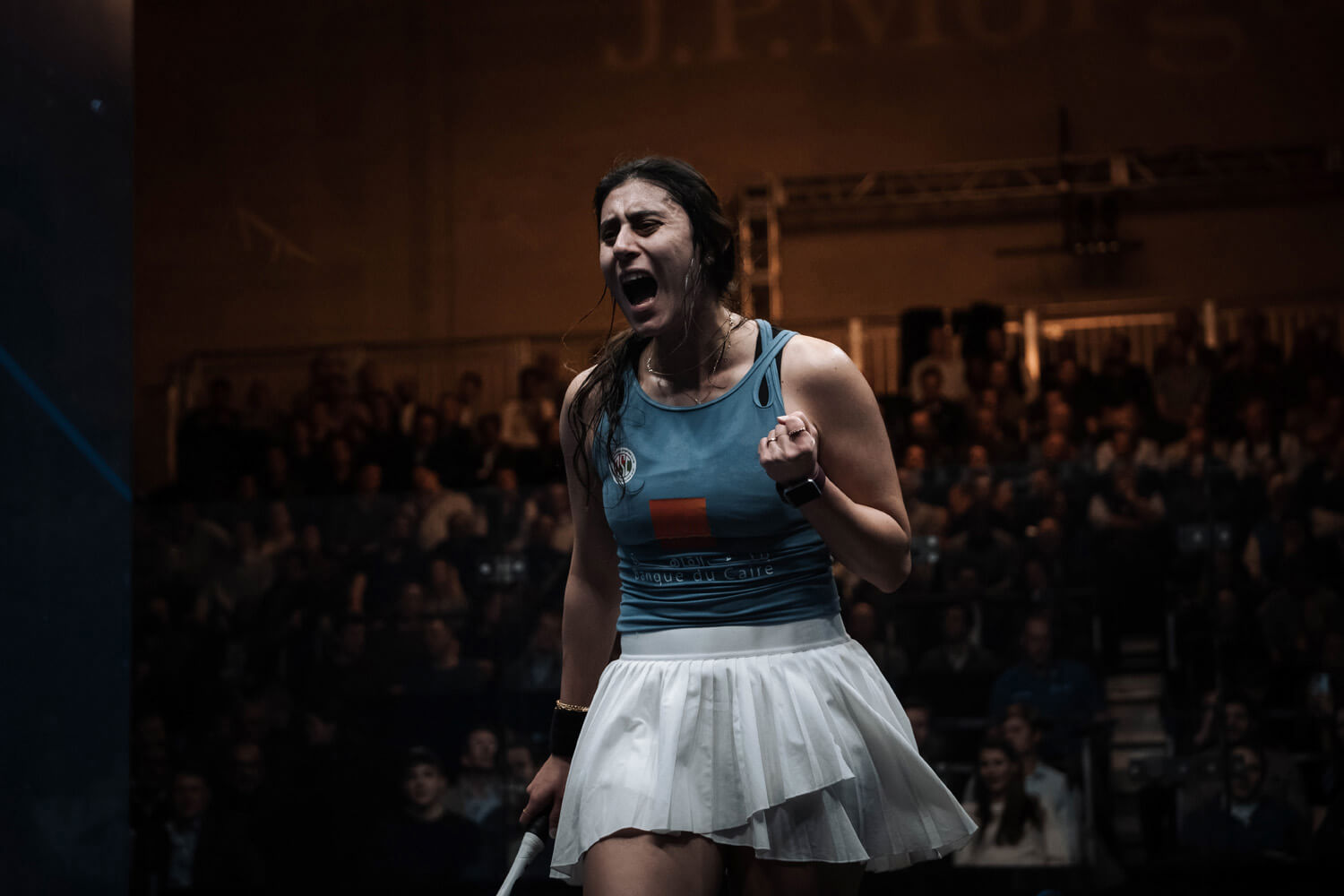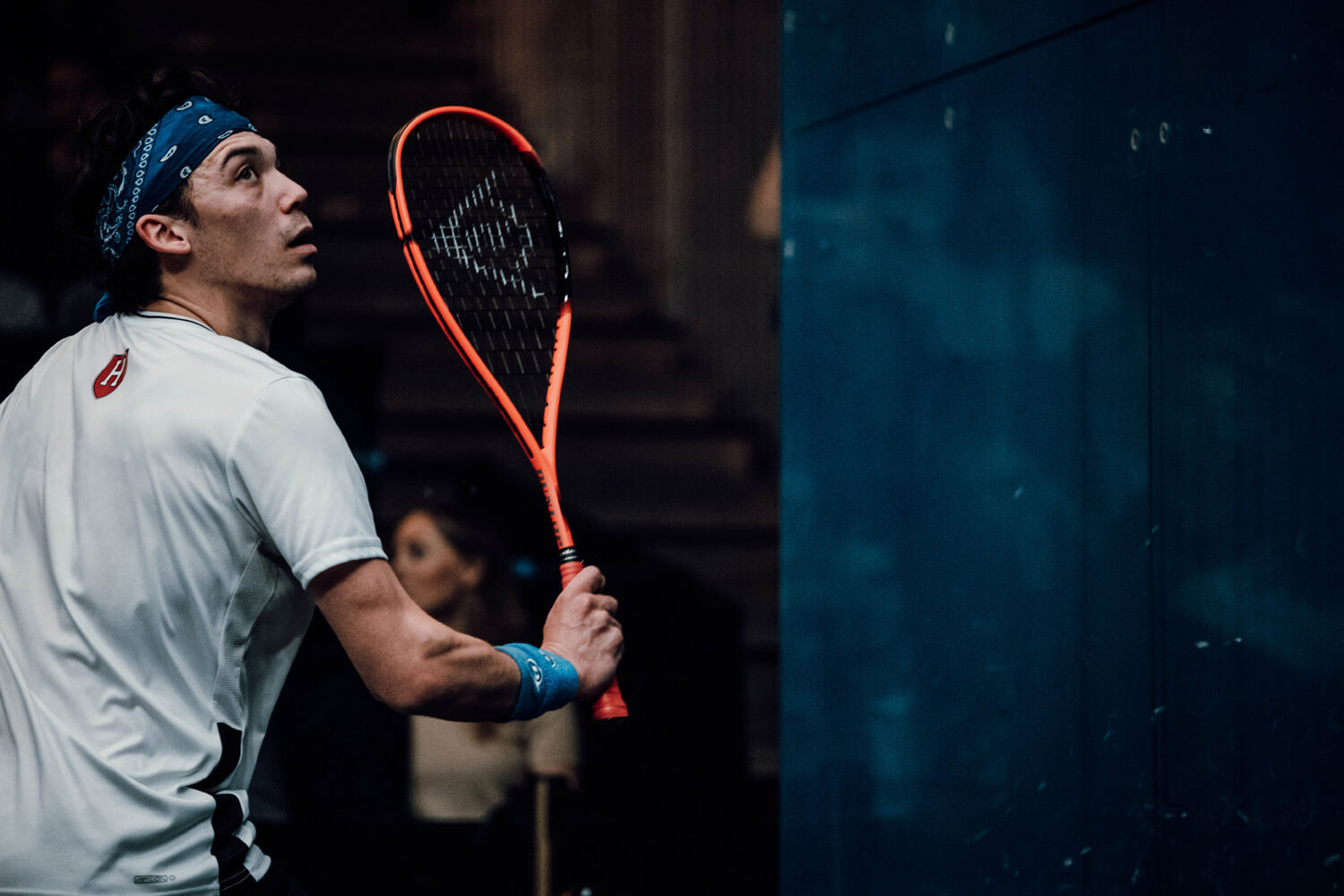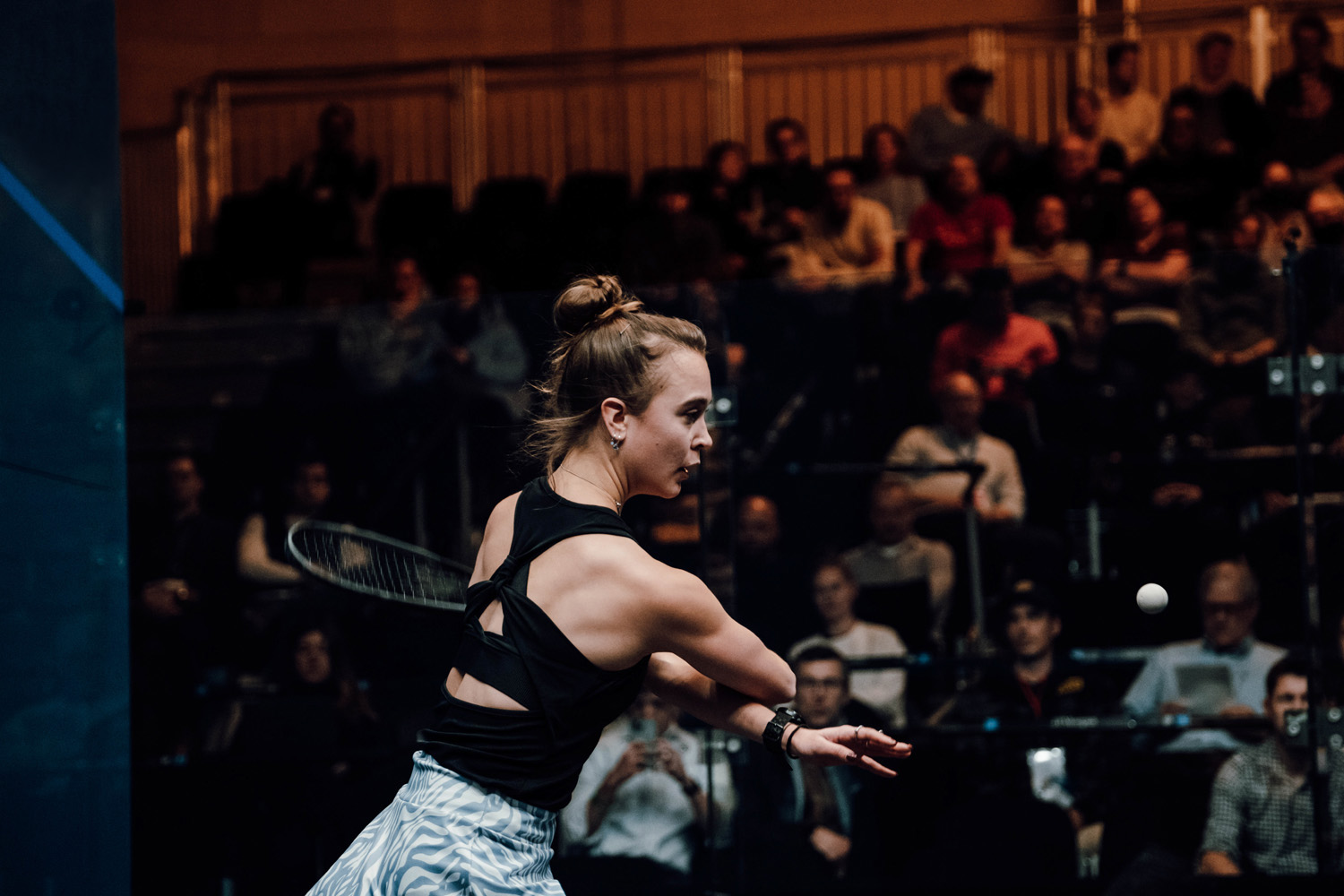
Alex Denham
In the simplest of terms, Alex is a global automotive and extreme sport photographer. In more complex terms, she is a capturer of the fleeting moment, driven by adrenaline to capture a photograph that you will never see again but always remember. Starting off as a passion for motorsport and a study of photography, a chance meeting linked the two together and created a dream which she has never looked back on.
Her unique style of shooting has built a career stretching across the globe across 6 continents since starting her career at 19 and she still loves every minute as much as she did back then. Alex has an unwavering passion to try and inspire younger generations to follow their passions and also to build a more welcoming environment for women within sport photography.
Combining technical excellence with boundless creativity, Alex Denham frames athletic achievement at the squash Tournament of Champions – and helps you photograph the heart of the action
It could be said that photographing sporting greatness is no less challenging than the feats themselves. The athlete’s keen mind for strategy is met by the artist’s creative eye; a broad choice of strokes is paralleled by varied photographic techniques; both individuals possess a heightened sense of foresight, timing and intent.
Much like a sportsperson, the image maker’s skills are built over years of hard work. Alex Denham – a talented motorsport photographer, who has more recently set her sights on the squash world – has been honing her craft for a decade, with the foundations of her career tracing back to school.
“Studying photography was cool – we got to learn a bit of everything. We’d do a module on fashion, property, landscape, portraiture and so on, so we developed a broad range of skills. It’s easy to learn what you’re passionate about that way,” Alex begins.
“The last module of the whole course was sports photography. I’d never done it before, but had always been around classic cars and racing through my mum. She invited me to the circuit to make some photos, and I fell in love with the genre there and then. It truly clicked.”

Photo 2023 © Alex Denham | FUJIFILM X-H2S and FUJINON XF50-140mmF2.8 R LM OIS WR, 1/640sec at F2.8, IS0 2500
Alex pursued her passion as a professional freelance creative, but hit a major stumbling block when Covid-induced lockdowns began. As sporting events were postponed for an uncertain extent, opportunities to document them were naturally quashed.
“I thought I could face rebuilding, but knew there was nothing else I was interested in doing as a career,” she muses. “I decided to make a change and happened to see a job with the PSA World Tour. I thought squash would be exciting, presenting a different set of challenges to motorsports. I was hired, then went on my first trip to Philadelphia immediately. With every event I photographed, I loved it more and more. The sport is so interesting to document and it’s a great community of people.”
With one of Alex’s most recent outings came an opportunity to trial a new camera system. FUJIFILM X-H2S in hand, she flew to New York to cover the illustrious Tournament of Champions.
“This was a very cool one,” the creator enthuses. “The glass court was built inside Grand Central Terminal. That’s so unique – few other sporting events could be held there.”

Photo 2023 © Alex Denham | FUJIFILM X-H2S and FUJINON XF8-16mmF2.8 R LM WR, 1/1000sec at F2.8, ISO 4000
Beautiful as it was, the setting was not without challenges. Outdoor sports photographers are at the mercy of changing elements, but indoors, there’s no brighter scene set to be revealed from behind a cloud. Image makers must adapt to what’s before them – and quickly.
“The first thing I do in any setting is gauge ISO. The Tournament of Champions was quite dark, with very warm lighting, so that was more difficult than usual. ISO had to be slightly higher to compensate. Typically, I’ll be around ISO 1600, but pushed to ISO 2000.
“For shutter speed, I’d say 1/640 sec is a good minimum for a sport of this pace,” Alex continues. “Once I get into detail-focused images, like a close-up of a racket hitting the ball, I’ll opt for a faster shutter speed up, just to make sure the motion remains frozen.”
Beyond shutter speed, a rapid frame rate is a must for these fractional moments of action. Ready for anything, X-H2S is capable of burst speeds up to 40fps, allowing Alex to select the perfect moment from a key sequential moment.

Photo 2023 © Alex Denham | FUJIFILM X-H2S and FUJINON XF16-55mmF2.8 R LM WR, 1/800sec at F2.8, IS0 3200
“I use F2.8 on almost all lenses, or wider if it’s a faster lens. I also prefer the shallow depth-of-field, because the players are always close to one of the glass court walls, and it helps keep the focus of the image on them, not the surroundings – though you can include more context at times.”
With a minimum speed dialled into Shutter Priority mode, the next significant challenge is focusing. In Alex’s experience, manual focus shouldn’t be ruled out – unlikely as it seems – but an advanced autofocus system will be relied upon often.
“During one of the matches, I wanted to photograph the tournament’s 25th anniversary sign, which was on the back wall of the court, with the players caught in motion blur in the foreground. In cases like that, autofocus would be pulling away from the subject you’re most interested in. But when actual play is happening, it’s all autofocus. Players are moving all over the place at high speeds, there are lots of different colours and points of contrast – so there’s plenty for the camera to get wrong.”
Designed with this kind of challenging situation in mind, Alex was well-equipped with X-H2S. X-Processor 5’s AI-based subject detection ensures fewer critical moments are missed. For fast-paced sporting action, it’s the perfect companion.

Photo 2023 © Alex Denham | Photo 2023 © Alex Denham | FUJIFILM X-H2S and FUJINON XF16-55mmF2.8 R LM WR, 1/800sec at F2.8, ISO 4000
“I’d never used a mirrorless for sports because they were less able to meet those needs – and squash is a perfect test, because of all its variables. Part of me was trying to find fault,” Alex jests, “but it surprised me – the tracking especially. It wasn’t trying to move away from the players towards the better-lit crowd. And the burst speeds are incredible. It’s a huge benefit to have all the features needed to facilitate your approach. You don’t get moments twice in sports photography.”
Then there’s the choice of lenses. How best to complement such a well-equipped camera’s abilities? Alex selected a trio of professional all-rounders. With XF8-16mmF2.8 R LM WR, XF16-55mmF2.8 R LM WR and XF50-140mm R LM OIS WR, she was able to move seamlessly from wide, atmospheric scenes to detailed close-ups. Adding even greater benefit, each lens is built with a powerful linear motor-driven focusing system and delivers weather-resistance for outdoor ventures. The longer zoom adds OIS to X-H2S’s in-body stabilisation system – perfect for handheld demands like Alex’s.
While some sporting locations – like the racetracks of Alex’s former years – present picturesque backdrops, it’s not the case for all events. Grand Central Station is a standout, but what of sports halls or arenas, which prioritise function over aesthetics?
“I’ll definitely take the opportunities beautiful spaces provide, and create more wide-angle frames,” Alex notes. “Elsewhere, I choose to focus on closer compositions of players, details of the game, or the crowd. When you have limited surrounding interest to include, you can still be creative by using techniques like slower shutter speeds, for example.”
Motion-blurred panning with a sharp central subject is a staple of many sports photographers. It’s one of many ways to inject life into a static frame, but is not easily done.
“Across all sports, I’d advise beginners to start with a faster shutter speed than they need, just to get used to it. When I was learning, I’d photograph exclusively at one shutter speed, then when I felt like I’d nailed it and all the images were sharp, I’d drop it down one stop. Even if it takes months, work your way down.”

Photo 2023 © Alex Denham | FUJIFILM X-H2S and FUJINON XF50-140mmF2.8 R LM OIS WR, 1/640sec at F2.8, ISO 3200
Editing is another means of heightening drama. Lighting can be controlled where otherwise impossible in the moment. Colours, too, can be heightened for added interest. It’s a necessity more than a pleasure for Alex, but she was pleased to find that X Series’ extensive in-camera look adjustments eliminated hours of screen time.
“I’ll always add some noise reduction in post – but not so much that it introduces noticeable softness,” she explains. “Even if noise isn’t obvious, it’ll become more apparent if you need to crop heavily or blow the image up to a large size later. Then I’ll add clarity and sharpness to bring any lost detail back.
“If I get to a tournament and the light looks too warm or cool, I’ll neutralise that. I set myself up a little preset on the first day, then batch copy that onto all images. It makes the process much quicker, especially if you want to share the image right away.
“One of the main things that stood out to me was the colour X-H2S produced. I quite like a punchy image, which I’ve usually had to create in the edit with other systems. The Velvia Film Simulation was perfect for the look I wanted, though. It was one of the standout features of the camera.”
Alex’s parting piece of wisdom is age-old. Keeping technical set-up and creative focus in mind will certainly lead to progression, but it must be refined over time. Much like the athletes in your sights, you must do the work.
“The fundamentals of sports photography are generally the same, regardless of the sport itself,” she concludes. “Practice as much as you can. Go to as many events as you can – even if they’re not the sport you’re interested in long-term. That’s the only way to learn.”















































